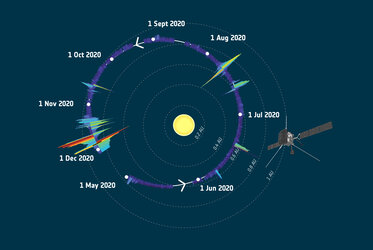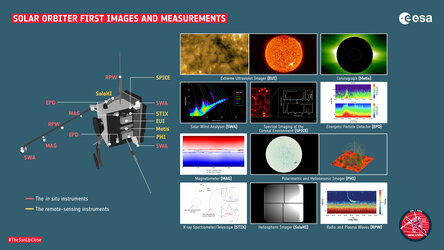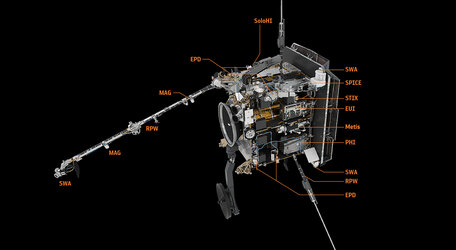Accept all cookies Accept only essential cookies See our Cookie Notice

About ESA
The European Space Agency (ESA) is Europe’s gateway to space. Its mission is to shape the development of Europe’s space capability and ensure that investment in space continues to deliver benefits to the citizens of Europe and the world.
Highlights
ESA - United space in Europe
This is ESA ESA facts Member States & Cooperating States Funding Director General Top management For Member State Delegations European vision European Space Policy ESA & EU Space Councils Responsibility & Sustainability Annual Report Calendar of meetings Corporate newsEstablishments & sites
ESA Headquarters ESA ESTEC ESA ESOC ESA ESRIN ESA EAC ESA ESAC Europe's Spaceport ESA ESEC ESA ECSAT Brussels Office Washington OfficeWorking with ESA
Business with ESA ESA Commercialisation Gateway Law at ESA Careers Cyber resilience at ESA IT at ESA Newsroom Partnerships Merchandising Licence Education Open Space Innovation Platform Integrity and Reporting Administrative Tribunal Health and SafetyMore about ESA
History ESA Historical Archives Exhibitions Publications Art & Culture ESA Merchandise Kids Diversity ESA Brand CentreLatest
Space in Member States
Find out more about space activities in our 23 Member States, and understand how ESA works together with their national agencies, institutions and organisations.
Science & Exploration
Exploring our Solar System and unlocking the secrets of the Universe
Go to topicAstronauts
Missions
Juice Euclid Webb Solar Orbiter BepiColombo Gaia ExoMars Cheops Exoplanet missions More missionsActivities
International Space Station Orion service module Gateway Concordia Caves & Pangaea BenefitsLatest
Space Safety
Protecting life and infrastructure on Earth and in orbit
Go to topicAsteroids
Asteroids and Planetary Defence Asteroid danger explained Flyeye telescope: asteroid detection Hera mission: asteroid deflection Near-Earth Object Coordination CentreSpace junk
About space debris Space debris by the numbers Space Environment Report In space refuelling, refurbishing and removingSafety from space
Clean Space ecodesign Zero Debris Technologies Space for Earth Supporting Sustainable DevelopmentLatest
Applications
Using space to benefit citizens and meet future challenges on Earth
Go to topicObserving the Earth
Observing the Earth Future EO Copernicus Meteorology Space for our climate Satellite missionsCommercialisation
ESA Commercialisation Gateway Open Space Innovation Platform Business Incubation ESA Space SolutionsLatest
Enabling & Support
Making space accessible and developing the technologies for the future
Go to topicBuilding missions
Space Engineering and Technology Test centre Laboratories Concurrent Design Facility Preparing for the future Shaping the Future Discovery and Preparation Advanced Concepts TeamSpace transportation
Space Transportation Ariane Vega Space Rider Future space transportation Boost! Europe's Spaceport Launches from Europe's Spaceport from 2012Latest

Joining the dots of an energetic particle event
Thank you for liking
You have already liked this page, you can only like it once!
The solar flare event of 21 March 2022 observed by the ESA/NASA Solar Orbiter spacecraft and highlights the complex magnetic environment in which the spacecraft operates. The flare itself took place just behind the visible face of the Sun as seen by Solar Orbiter but was still glimpsed by Solar Orbiter’s Extreme Ultraviolet Imager (EUI) and the X-ray Spectrometer/Telescope (STIX) instrument, as the energy released in the flare rose above the solar limb. In the graphic, the source X-ray flare seen by STIX is marked as a small red dot, the expanding shock wave (green/yellow) was seen by EUI.
The flare triggered an eruption of particles into space, known as a coronal mass ejection, but this did not travel towards Solar Orbiter. Instead, it moved off in a different direction through the Solar System. Nevertheless, a cloud of extremely energetic particles produced in the flare and probably by the shock wave driven by the CME’s expansion did begin to fill space near the Sun, guided by the Sun’s magnetic field. And some of these were travelling towards Solar Orbiter.
The spacecraft’s Radio and Plasma Waves (RPW) experiment saw them coming, picking up the strong characteristic sweep of radio frequencies produced by the accelerated particles – mostly electrons – spiraling outwards along the Sun’s magnetic field lines. RPW then detected oscillations known as Langmuir waves when the particles swept over the spacecraft.
Simultaneously, the Energetic Particle Detector (EPD) also registered a cloud of energetic particles sweeping across the spacecraft. The diagonal detection curve shows that the most energetic of the particles arrived first, followed by those of lower energies that arrived up to several hours later. This indicates that the particles were produced far away from the spacecraft, which allowed the faster particles to pull ahead of the slower ones. The compositions of the particles are also noted.
By combining the results of Solar Orbiter’s remote sensing instruments with those that record the conditions around the spacecraft, researchers can follow the chain of events from near the surface of the Sun to the spacecraft and beyond. This ‘linkage’ science is one of Solar Orbiter’s primary scientific objectives.
-
CREDIT
ESA & NASA/Solar Orbiter/EPD, EUI, RPW & STIX Teams -
LICENCE
ESA Standard Licence

Detecting a solar energetic particle event with Sola…

An orbit’s worth of particle data

Solar Orbiter first images and measurements

Solar Orbiter instruments















 Germany
Germany
 Austria
Austria
 Belgium
Belgium
 Denmark
Denmark
 Spain
Spain
 Estonia
Estonia
 Finland
Finland
 France
France
 Greece
Greece
 Hungary
Hungary
 Ireland
Ireland
 Italy
Italy
 Luxembourg
Luxembourg
 Norway
Norway
 The Netherlands
The Netherlands
 Poland
Poland
 Portugal
Portugal
 Czechia
Czechia
 Romania
Romania
 United Kingdom
United Kingdom
 Slovenia
Slovenia
 Sweden
Sweden
 Switzerland
Switzerland

























